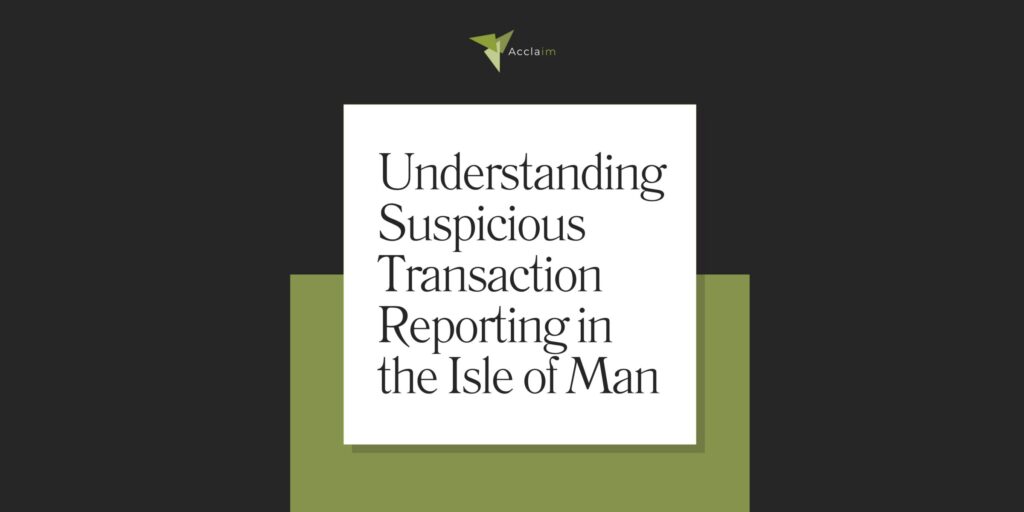
Company News
Understanding Suspicious Transaction Reporting in the Isle of Man
Understanding Suspicion and Reporting in the Isle of Man
Let’s break down suspicion and reporting, and clarify this vital part of compliance.
Step 1: What Is Suspicion?
Suspicion is a personal judgment. It arises when there’s more than just a remote possibility that something is linked to criminal conduct. It’s not formally defined, but we interpret it using case law and guidance.
This state of mind doesn’t require proof. It’s enough to feel reasonably satisfied that the activity could be linked to a predicate offence.
Importantly, you don’t need certainty. The legal threshold is knowledge, suspicion, or reasonable grounds to suspect.
What Should You Look Out For?
You must stay alert to any signs of:
-
Money laundering
-
Terrorist financing
-
Proliferation financing
-
Sanctions breaches
-
Human trafficking
-
Tax evasion
While these are commonly listed, you should consider all criminal activity.
Also, look out for behaviour that doesn’t align with the customer’s known profile, expected activity, or business type.
Step 2: When and How to Report
If you suspect something, act quickly. Report your concerns to the MLRO or dMLRO using your internal reporting tool. This is known as a Suspicious Transaction Report (STR). Whenever possible, submit it before the transaction goes through.
Your report should include:
-
Why you’re suspicious
-
Who is involved
-
What happened (transaction or activity)
-
How it differs from expected behaviour
Attach any relevant documents to help the MLRO assess it properly.
You should receive a formal acknowledgement. Keep this for your records. And remember: you must not discuss the STR with the client or their agent. Doing so is considered “tipping off” and is a criminal offence.
What Happens After You Report?
Once submitted, the MLRO will review the STR and may ask you for more details or supporting documents.
They’ll decide whether to escalate the report through Themis, the FIU’s online platform. Themis connects with international FIUs and handles reports under various laws, including:
-
POCA 2008
-
ATCA 2003
-
Section 24 of the FIU Act
-
Sanctions regulations
What Goes Into a Themis Report?
A Themis submission usually contains:
-
Reporter details
-
Subject details and relationships
-
Transaction or account info
-
Grounds for suspicion
-
Attachments or evidence
The FIU tracks the quality of these reports and provides feedback to your MLRO.
Need Consent? Wait First.
If the MLRO requests consent to proceed with a transaction, do not continue until the FIU gives clearance. The MLRO will guide you based on the case.
Be aware: FIU turnaround times vary, so always factor in delays when reporting time-sensitive matters.
Final Note
This article gives a brief overview of STR handling — each case will differ. It’s not intended as a comprehensive guide, nor does it offer legal advice.
⚠️ The FIU does not handle criminal reports. For criminal matters, contact the local Police or the Economic Crime Unit.
And in case you’re wondering —
Yes, the FIU reads every single disclosure.
Share This Article





